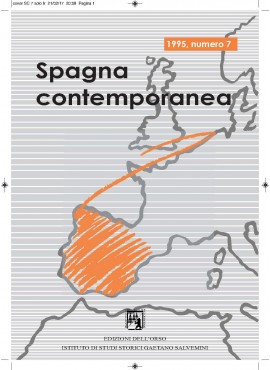Nacionalismo gallego y sociedad: una interpretación general (1840-1994)
Resumen
Galician Nationalism and Society: A General Interpretation (1840-1994)
The article analyses the Galician nationalist movement’s social dimension from its beginning until today, focusing on its rank-and-file and its social size, as well as on the echo found by nationalist programs and goals within Galician society. Starting in the Nineteenth Century from a social basis mainly formed by urban intelligentsia and some sectors of the lower-middle-class, from 1916 (the Irmandades da Fala’s period) the beginning of a slow process of increasing social audience among the urban middle-class may be observed, which continued during the 2nd Spanish Republic (foundation of the Partido Galeguista) and even reached for the first time significant portions of peasantry and urban artisans. However, the sudden interruption imposed to such quick, but still immature, socio-political dynamics by the outbreak of the Spanish Civil War was the reason why in the post- war years Galician nationalism was reduced to a minority of intellectuals and urban professionals. Such a situation began to change in the middle of the Sixties, when Marxist-oriented left-wing organisations gained the hegemony of the whole of Galician nationalism. From 1975 to 1993, Galician nationalism has maintained an average electoral score of 15%, finding the majority of its supporters within the urban lower-middle- class and the white-collar workers, and within some portions of peasantry and industriai workers. Only in the last two years there has been a substantial increase of the social expectation of Galician nationalism, due to the structural changes happening within Galician society in the ’90’s and to the economie impact caused in Galicia by Spain’s European integration.
Descargas
Publicado
Número
Sección
Licencia
Derechos de autor 1995 Istituto di studi storici Gaetano Salvemini, Torino

Esta obra está bajo una licencia internacional Creative Commons Atribución-NoComercial-SinDerivadas 4.0.



